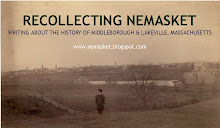.
The method of teaching grammar in Middleborough’s schools, and the inordinate amount of time devoted to the subject, came in for sharp criticism by the school committee in early 1875, undoubtedly to the delight of scholars plagued by the subject.
It seems to us that an immense amount of time is wasted in the study of Grammar, as conducted in schools. The object of English Grammar is said to be to teach one to “speak and write the English language correctly.” Does the usual method of teaching it do this? To some extent, doubtless it does. But not to a degree proportioned to the amount of time and study devoted to it. Our children spend months of precious time in storing away in their minds vast quantities of almost useless verbiage. The old time “parsing” [sentence diagramming] has been mostly supplanted by the more modern “analysis.” But has this innovation, which has been for many years so popular, and from which so much was expected, answered the high hopes which were entertained of it? We think not, and we believe that we are not alone in this opinion, but that it is shared in by many of the best educators. Scholars may learn to talk very glibly of “simple,” “compound,” “complex,” “elements,” “first class,” second class,” and “third class,” and yet not know how to “speak and write the English language correctly.”
For 1877, the town adopted a new grammar for the primary levels, changing to Harvey’s which it favored for the text’s avoidance of theoretical discussions which served “only to confuse and discourage the beginners”. Throughout the period, Harvey’s remained the standard grammar text for Middleborough scholars.
In 1885, Superintendent of Schools Morss concurred that “it is in this branch [written language work] that our schools show the greatest weakness". "Grammar never taught any one to speak and write correctly. It simply tells us the usage which is sanctioned by good writers and speakers. We must learn to use good language by using it,” emphasized Morss. Little is recorded, however, regarding what changes were implemented to improve language study in the schools at this time. In fact, less attention was given in reports of the area to this field of study than to others.
In 1923, Pearson and Kirchwey’s Essentials of English language series was adopted in the Green and other schools following the recommendation of the central school teachers who had used it with success.
Subscribe to:
Post Comments (Atom)













+-+Copy.jpg)

+of+Smoky+Mountains+018.jpg)
No comments:
Post a Comment